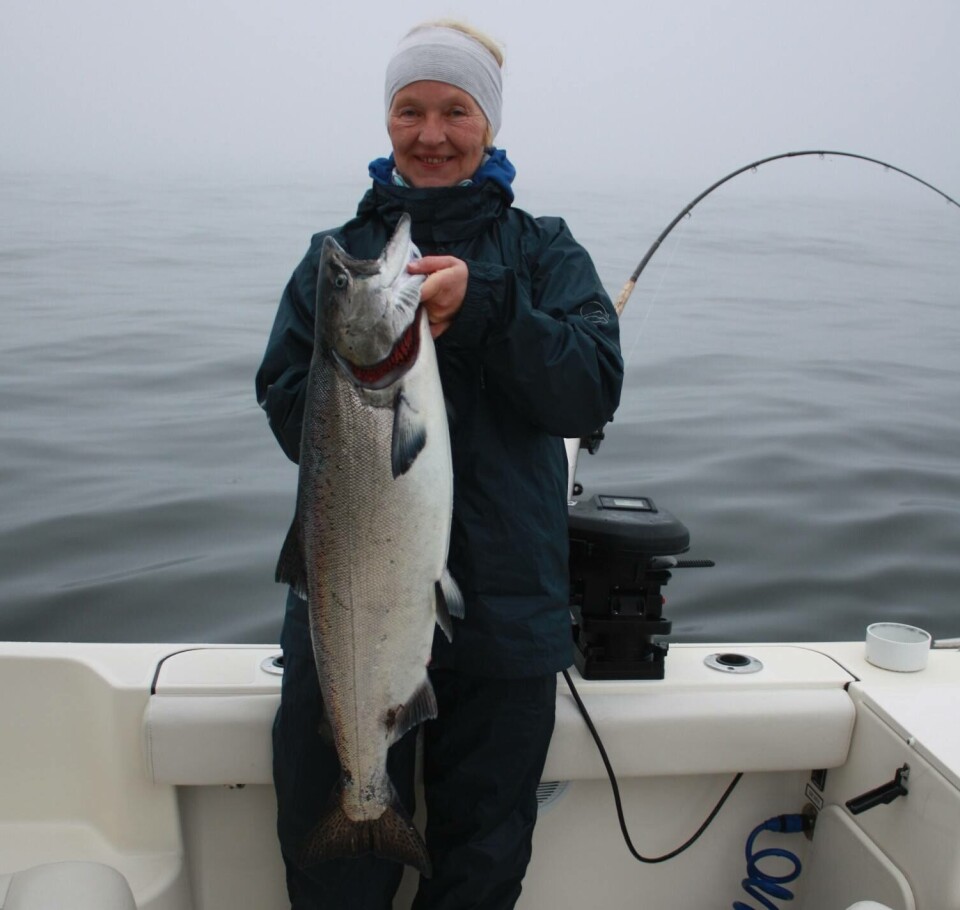
Record runs of salmon expected
Opinion
Last September I had the pleasure of organizing a fishing trip as part of a visit to British Columbia by some 30 Norwegian visitors. The fishing took place some kilometers off the west coast of Vancouver Island, and the target species was Chinook salmon (called King salmon in the United States)- the largest of the five species of Pacific salmon. The Chinook is being produced at aquaculture farms in both Canada and New Zealand, among other countries. It can grow as large as any Atlantic salmon.
It is anticipated that most of the Chinook salmon caught in this particular area at that time of the year would be migrating from feeding grounds in the North Pacific to spawn in rivers along the coast of Washington and Oregon. The Oregon and Washington Departments of Fish and Wildlife recently announced the final estimates for the number of returning Chinook salmon last year, as well as an estimate of anticipated returns this coming year. The fact that last year’s returns for at least some of these rivers were good came as no surprise to the tourists from Norway, as every one of them (who wanted to fish) caught at least one big (20-30 lbs or 10-15 Kg) Chinook salmon- likely heading for southern U.S. rivers.
The ten year average return of Chinook salmon to the Columbia River in Washington State has been some 569,000 fish (about the same as a reasonably good year of returns of Atlantic salmon to all rivers in Norway combined). This year’s run is expected to be similar to that seen in 2011- about 651,000 Chinook, many of which will spawn in the upper reaches of the river, and therefore they will be of good quality while approaching the river-mouth.
The returns of Chinook salmon to the Klamath River in Oregon was approximately 68,000 fish in 2008, and increased to some 233,000 last year. This year (2012) the river is expected to be the targeted spawning ground for about 1.6 million of these prized fish, raising concerns about too many fish and prompting many to call for increased fishing quota for both ocean sport and commercial fisheries. In the Sacramento River, this year’s run is expected to be about 820,000 Chinook salmon- four times that of last year. The reasons for these good returns of salmon are speculated to include improved ocean survival and adequate water flows in the rivers.
David Bitts, president of the Pacific Coast Federation of Fishermen’s Associations said to Kim Murphy of the Los Angeles Times that; “So yeah, it’s just really good news. Some years ago when something like this happened, a friend of mine said, well, maybe it means we haven’t screwed it up too bad yet.” The forecast is so large, he added, that the river may not be able to sustain that many fish without crashing the 2013 population. He will argue, not surprisingly, for a big catch quota when the Pacific Fishery Management Council structures this year’s fishing season in April — the reason all the fish forecasts were developed to begin with.






















































